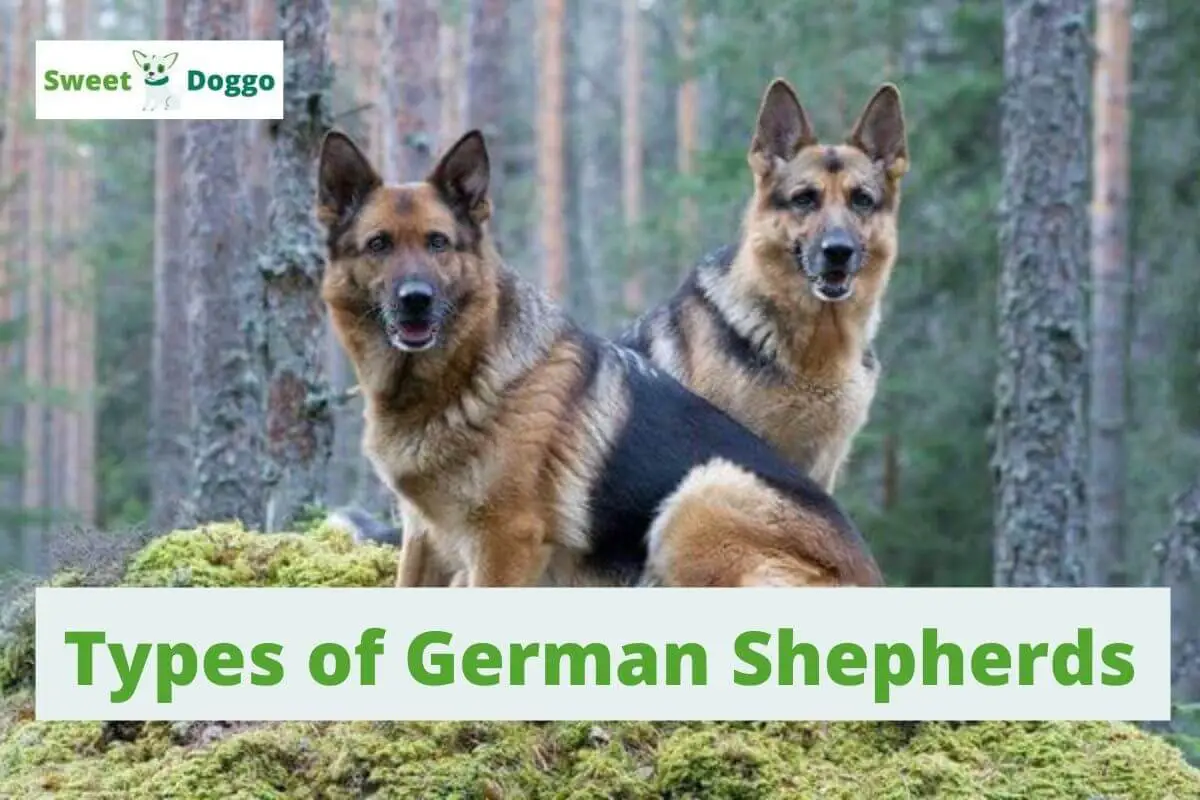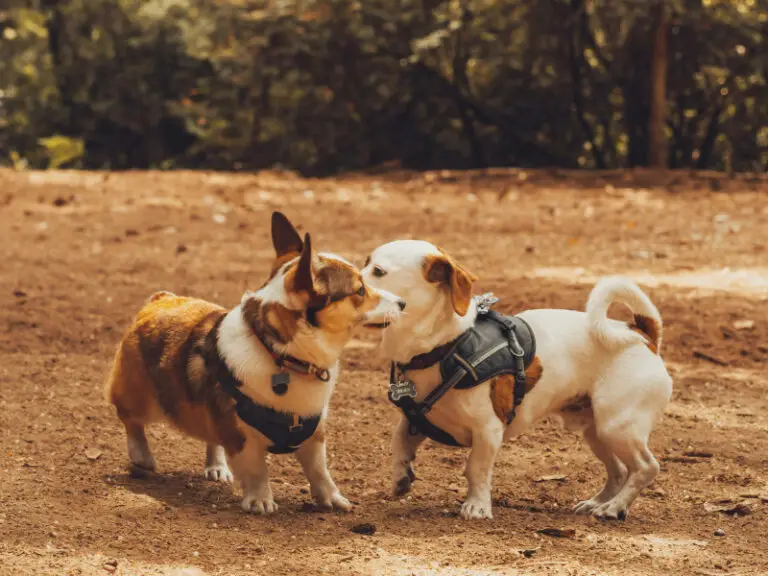Given the history and great versatility of this breed, today we speak of different types of German Shepherds. Each of those types has its own characteristics, hence they are better suited to perform different roles. Physical appearance, purpose, and instincts may vary from dog to dog, but all are still considered German Shepherds.
Table of Contents
How many types of German Shepherd are there?
The first distinction within the German Shepherd breed is that there are two main breeding lines: the working line and the show line. These, in turn, are divided into 5 types or general lines:
- Western working german shepherd
- Eastern working german shepherd
- Czech working line german shepherd
- American show german shepherd
- Western show german shepherd
Before delving into each of these types, it is important to know the differences between a working and a show German Shepherd.
As their name suggests, working German Shepherds have been bred to work. They are dogs with a high level of energy, great prey drive, and a natural predisposition to perform tasks to please their owner.
In addition, they are very intelligent, athletic, self-confident, brave, and protective.
For their part, show German Shepherds are bred to show off and please admirers of the breed who want a calmer, less demanding dog. While they remain active, protective, and hard-working, what matters most is appearance and certain temperament traits.
With that being said, let’s go into detail about all types of German Shepherds and their characteristics…
Working lines or types of work
1. “Western” working German Shepherd
This type of working German Shepherd is said to be the most similar to the dog bred by Max von Stephanitz, creator of the German Shepherd breed. He is described as a shepherd of high quality and a great willingness to work, learns, listen and please his master.
It is also good as a watchdog, protector, as well as a service dog for search and rescue duties.
In addition, it adapts very well to family life. His stable temperament makes him an excellent companion, as long as his exercise and mental stimulation requirements are met.
The western line of work is divided into 5 sub-types or variations; this includes the German-Dutch Shepherd and the German-Belgian Shepherd. Each variation exhibits specific traits in coat color and type but is still considered the same dog.
How does it look?
The Western Line Working German Shepherd can be sable, black, bicolor, or black and tan. Compared to the eastern line dog, its coat is less dark. He also has a more sloping back.
2. “Eastern” Working German Shepherd
According to experts, the Eastern breeding line originated in the 1940s and 1950s, when East Germany broke away from West Germany. These dogs were not bred for their looks, but for their viability.
The highly government-regulated breeding process ensured the development of a large, strong, loyal, hardy, and obedient German Shepherd. In other words, a pure breeding line was obtained, which is still highly valued for its excellent genetics and solid temperament.
Some of the roles he excels at are guard dog, police, or military service.
This is an ideal type of German Shepherd for hard work, but can also be good as a family pet. Keep in mind that he was bred to boost work drive, so his owner should make sure to keep him active. Otherwise, it can get boring and potentially destructive.
How does it look?
The East German Shepherd type is usually dark in color, either sable, black, or sable-black. It has a robust, elegant body, with strong bones, a not-so-sloping back, and a remarkably large head. Compared to the Western Working Shepherd, it can be smaller.
3. Working “Czech” German Shepherd
The Czech-type dog is considered the least common among working German Shepherds. This line was specifically bred to patrol the Czech border after World War II. They are high drive specimens who like to be challenged.
It is said that they are more agile than any other line and their motivation as guard dogs is higher.
Today, the Czech German Shepherd is highly valued for its work in police departments and search and rescue teams, among other jobs.
Although it can be good as a house pet, this is not recommended if you cannot give it all the exercise and stimulation it needs. You can not lose sight of the fact that he has been raised to work.
How does it look?
The Czech Working German Shepherd has the most wolf-like appearance among its close cousins. He is also usually the smallest. His coat is predominantly dark, varying between wolf gray, dark brown, and black. This dog’s ears are slightly smaller and its jaws are powerful.
Display lines or types
4. “American” show a German Shepherd
Very popular in North America during the 1970s, the American show line strays considerably from the original German Shepherd. It should be noted that this includes both the American and the Canadian show dog, but together they are known as the American breeding line.
Breeders give up protecting the typical temperament of the breed, in favor of appearance and gait. As a result, this type of German Shepherd is more relaxed and has less drive; His energy level is lower compared to working German Shepherds.
That doesn’t mean they aren’t active or don’t like to be useful, but they usually don’t have the same stamina. They often excel at tracking, agility, and obstacle course tasks.
Since they do not have the temperament of a working dog nor do they have the same protective instincts, they often make excellent pets.
How does it look?
The American Show German Shepherd has been bred to maintain a specific body style and coloration pattern. They generally have a taller and longer body, with a smaller head and extreme rear angulation (body sloping downward from head to rear).
The short, thick, and typically lighter coat can be a variety of colors, including black and tan, solid black, sable, bicolor, and solid white. The legs should be tan with a black-brown coloration.
In the United States, there is also a pet German Shepherd line, which is closely related to the show line. These dogs are bred as pets, but they have the same body type and personality traits.
5. “Western” show German Shepherd
Like the American show line, this German Shepherd is bred for a specific appearance; however, he must also show ability for the job. He is not considered a laid-back dog. In fact, he needs quite a bit of exercise and training.
He is often described as highly intelligent and easy to train. It has a stable temperament, and alertness, and is instinctively protective.
Compared to its close cousin, the western type is more versatile, as it can be good as a protector and as a family pet.
How does it look?
The Western Show German Shepherd is similar to the American but more robust. His body also has an inclination from the head to the rump, but not as much. Coat color, typically deeper and richer, can be black and tan or black and red-brown, the latter being the most desired.




